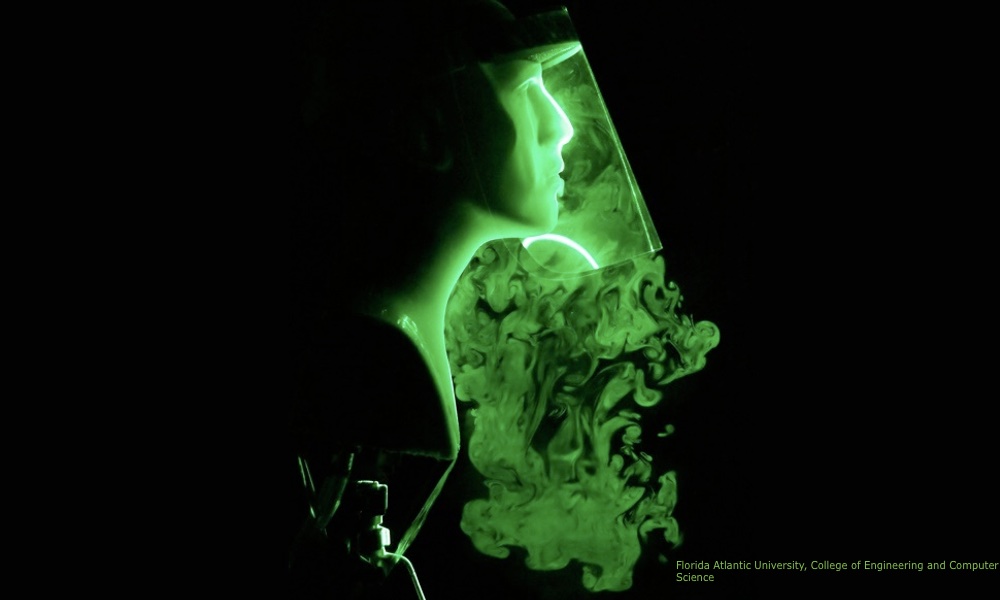Face masks have become one of the most accepted ways to prevent the spread of SARS-CoV-2, the virus that causes COVID-19. As the COVID-19 pandemic continues, face shields and masks with one or two exhalation valves are becoming more widely used because many people find them more comfortable than cloth or surgical masks.
A new study tested the effectiveness of face shields and N95-rated masks with an exhalation valve at limiting the spread of respiratory droplets, such as those emitted during coughing or sneezing. Researchers from Florida Atlantic University were continuing their previous work testing the effectiveness of different cloth masks and face coverings. The findings of the current study suggest face shields and masks with exhalation valves are not particularly effective at preventing the spread of respiratory droplets and, therefore, the spread of SARS-CoV-2.
“Face shields have noticeable gaps along the sides and bottom, and exhalation valves in masks allow exhaled breath to pass though them unfiltered,” Siddhartha Verma, lead author on the study and an assistant professor in the department of ocean and mechanical engineering at Florida Atlantic University, told TheDoctor.The researchers measured how effectively a face shield or an N95 mask with an exhalation valve stopped the spread of respiratory droplets made of distilled water and glycerin.
Although face shields blocked their initial forward motion, the droplets easily moved around the visor and spread out over a large area. How far they spread would depend on so-called ambient disturbances: changes in airflow because of air conditioning if indoors or breezes or wind when outdoors. In the current study, the droplets appeared to spread about three feet both horizontally and vertically.
Only a few exhaled droplets escaped from the gap between the top of the mask and the bridge of the nose. But a large number of droplets escaped unfiltered through the mask’s exhalation valve, so it was not an effective means of controlling the spread of the SARS-CoV-2 virus.
When the experiment was repeated with an N95 mask without an exhalation valve, exhaled droplets also escaped from the gap between the mask and the nose. But these droplets did not travel as far as those emitted from behind a face shield or an N95 mask with a valve.
To compare the performance of regular surgical masks to N95 masks, the researchers ran the experiment with two commercially available masks. It is worth noting that neither brand is recommended for medical use by the manufacturers. One brand (“brand A”) was more effective than the other brand (“brand B”) at stopping the forward spread of respiratory droplets.
The study is published in Physics of Fluids.





